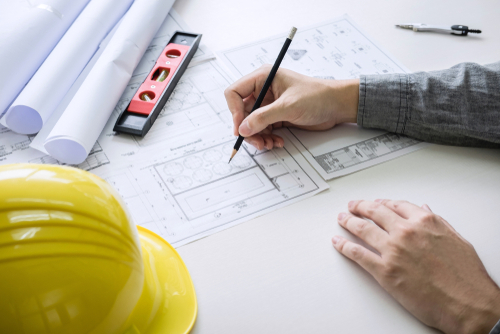Historically, construction projects have often come at the detriment of the environment. Not only does the industry rely on removing raw materials from the earth, but there are so many other environmental factors to consider, from the generation of waste to the polluting nature of the machinery and transportation. These impacts have been felt on a global scale.

But now, with businesses and governments ramping up efforts to meet environmental targets, many construction firms are starting to implement more sustainable policies and practices for the well-being of the planet. And one common solution is to rely more heavily on the principles of a circular economy—placing greater emphasis on reusing and recycling materials time and time again.
The number of abandoned and unused buildings is on the rise, with the pandemic having a profound impact on the vacancy rates of commercial spaces across the country. Many buildings are designed for a single use and then abandoned when that use is no longer relevant. For example, a factory building that is no longer needed cannot be easily converted into housing or office space. As a result, these buildings often sit vacant for years, deteriorating and negatively impacting the surrounding community.
In this post, we’ll explore some of the reasons why it’s so important that commercial and industrial buildings, in particular, are designed with the principles of a circular economy in mind.
The Importance of Building Reuse
There are many reasons why it’s important to design buildings for reuse. First and foremost, it’s important from an environmental standpoint. When a building is demolished, all of the materials that were used to construct it are sent to landfills. Construction companies could instead consider the materials they use in the first place in order to ensure they can be reused in the future. There are many different reusable building materials that are commonly used in projects around the world, such as steel and many types of insulation.
Beyond the environmental aspects, designing buildings for reuse can also have strong social implications. By repurposing existing infrastructure, rather than abandoning it, construction companies can help to establish more vibrant and livable communities for the local residents.
How to Design Buildings for Reuse
When designing a building, it’s important to consider how it might be used in the future. One way to do this is to design flexibility into the building itself. For example, office buildings can be designed with wide open floor plans that can easily be converted into residential blocks. Another way to design for reuse is to create ground-floor retail spaces that can be used by businesses even if the upper floors are converted into residential units. By designing buildings with multiple uses in mind, we can create more sustainable communities.
Constructing a Reusable Future
Abandoned and unused buildings are eyesores that negatively impact communities both aesthetically and economically. We need to start designing buildings with multiple uses in mind so that they can be easily adapted if their primary use changes. Only then will we be able to create truly livable spaces for everyone.
Phoebe Owen is a freelance writer and editor who focuses mainly on sustainability and scientific issues. She graduated with an English degree and enjoys writing articles that are thought-provoking and provide readers with important insights on how to save the environment.
